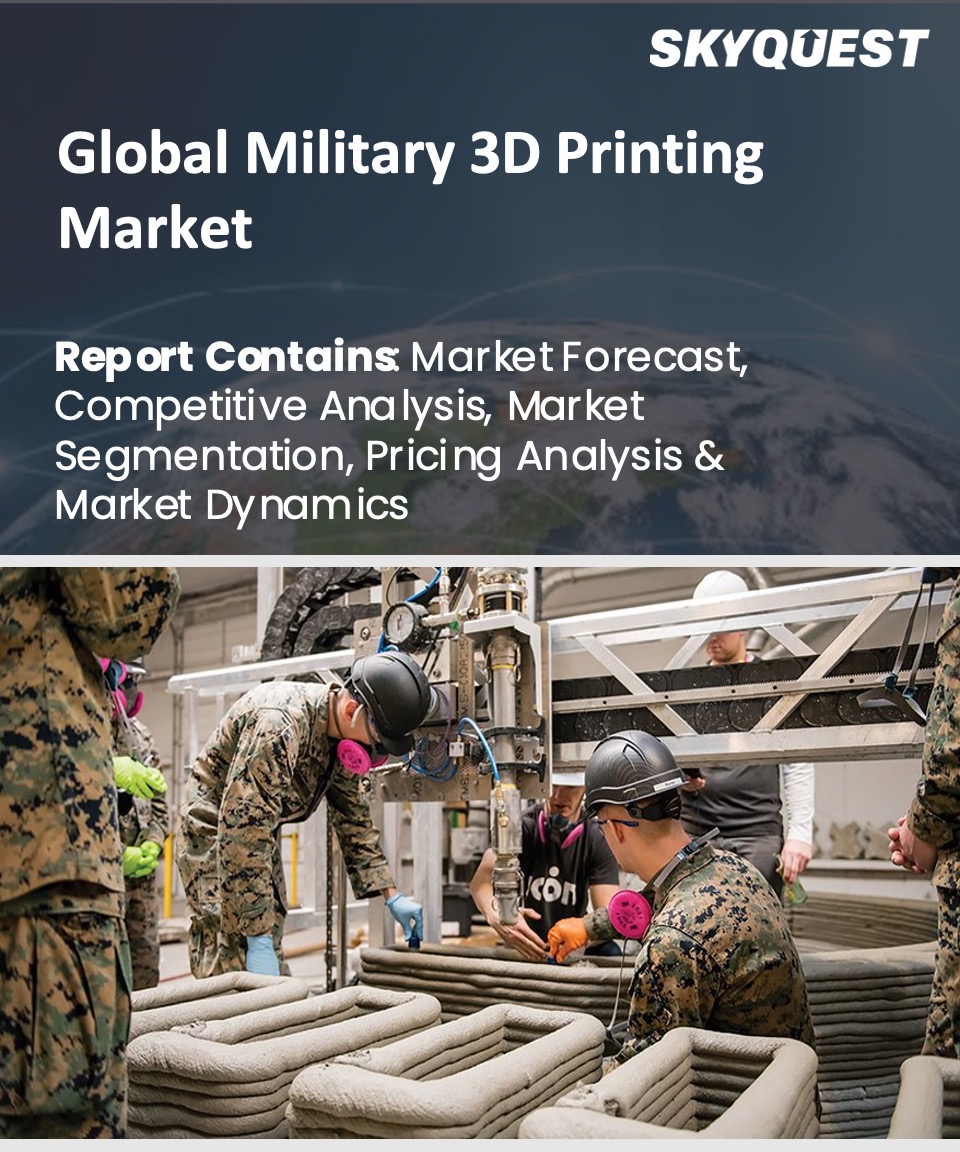
Product ID: SQMIG20A2254

Report ID:
SQMIG20A2254 |
Region:
Global |
Published Date: March, 2024
Pages:
191
|
Tables:
63 |
Figures:
69
Drivers
The dramatic development in 3D printing technology has significantly transformed manufacturing through multiple processes in industries like defense. Innovations in metal 3D printing, composite materials printing, and multi-material printing have increased the capabilities of additive manufacturing, allowing the production of complex and custom-made parts, components, and prototypes. Military organizations utilize 3D printing technology to increase equipment readiness, decrease the chance of supply vulnerabilities, and speed up essential defense systems and equipments production.
Conventional manufacturing techniques in the military industry are known for slow purchase procedures, high tooling expenses, and limited design flexibility. However, 3D printing permits the cost-efficient and time-saving solutions without any expensive tooling present, less material wastage, as well as on-demand production of parts and components. Military organizations can benefit from 3D printing by saving considerable costs, minimizing lead times for manufacturing of spare parts, and improving operational readiness through prompt equipment maintenance and repairs.
Restraints
The use of 3D printing in the military industry is challenged by regulatory obstacles and certification requirements, especially for crucial applications such as aerospace and defense. The issue of meeting stringent military standards and regulatory compliance when it comes to quality, reliability, and safety of 3D-printed components and parts should not be overlooked. Nevertheless, the absence of standard procedures, certification processes, and regulatory actions presents huddles in the acceptance of 3D printing technology in the military operations, slowing down the procurement and limiting the deployment opportunities.
Whereas 3D printing affords designers maximum degrees of freedom and customization, the quality of printed components often depends on the choice of materials. For the military applications, materials must be extremely strong heat-resistant and chemically stable in order to function in severe conditions and meet rigorous operational parameters. However, access to qualified materials for military-grade 3D printing is currently limited, therefore achieving the necessary mechanical properties, reliability, and long-term performance of printed components may present a challenge.
Our industry expert will work with you to provide you with customized data in a short amount of time.
REQUEST FREE CUSTOMIZATIONWant to customize this report? This report can be personalized according to your needs. Our analysts and industry experts will work directly with you to understand your requirements and provide you with customized data in a short amount of time. We offer $1000 worth of FREE customization at the time of purchase.

Product ID: SQMIG20A2254